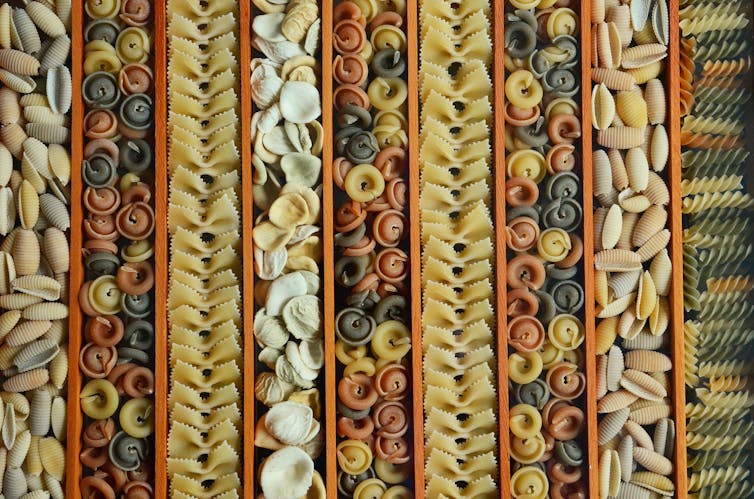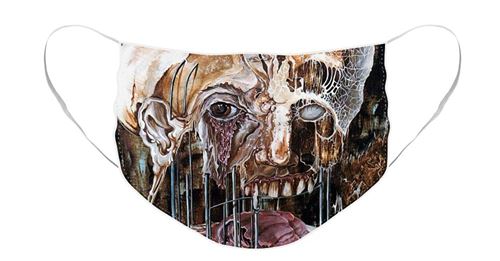|
Going back a few years because I got curious about our political leaders these days, so looking for the definition, I found this article:
Leaving the past behind: what became of the anal personality?
In theory, bad scientific ideas are abandoned and replaced by better ones. We no longer believe living things are animated by a vital force or that combustible matter contains phlogiston. We don’t believe the bumps on our skulls reveal our strengths and weaknesses or that disease is caused by foul air. Sometimes, though, ideas are abandoned too soon. They may simply become unfashionable or contain a germ of truth that is wrapped in a husk of error. Arguably one of Sigmund Freud’s oddest ideas – the existence of an anal character type – is an example of the latter. In this case, the baby may have been thrown out with its soiled bathwater. The anal characterWriting in 1908, Freud identified a cluster of personality traits that came to be known as the “anal triad”. Orderliness refers to excessive conscientiousness and a concern with neatness and cleanliness. Obstinacy involves being stubborn, wilful and rigid. Parsimony represents stinginess with money and time. Freud found these traits clustered together in people who expressed, during psychoanalytic treatment, an emotionally charged fascination with defecation. They recalled taking pleasure in emptying their bowels and in “holding back”, a pleasure Freud described as erotic in his expansive understanding of the word. Their anal traits originated in this childhood obsession. Orderliness was a reaction against their fascination with filth, and obstinacy and miserliness were sublimated, socially acceptable expressions of faecal retention. Later psychoanalytic theorists such as Ernest Jones and Karl Abraham filled in Freud’s sketch of the anal personality. This character type was perfectionistic, pedantic, detail oriented, prone to disgust, and excessively self-reliant. Anal characters had a passion for classifying, organising and statistics and they were drawn to collecting objects like coins and stamps which, to Freudians, symbolised excrement (filthy lucre). Anal characters were often “notorious bores” afflicted by “Sunday neurosis”: the inability to relax on the weekend. Writers speculated they were fascinated by tunnels, tended not to change underwear “more than is absolutely necessary” and were exceedingly sparing in their use of toilet paper. Research on the anal characterIn the mid 20th century researchers began to subject these pungent ideas to empirical scrutiny. Some of their findings were encouraging: anal character traits did tend to cluster together among adults, although they formed a spectrum rather than a type. However the more basic question is whether these traits are rooted in early childhood and linked to defecation. If not, the anal character is in no meaningful sense anal. One amusing study examined whether anal characters were indeed particularly troubled by faeces. People high or low in anal traits were asked to identify by touch objects submerged in different liquids. In one experimental condition that liquid was water and in the other a malodorous pseudo-faecal mixture of flour and used crankcase oil. As predicted, anal characters performed more poorly in the faecal condition, supposedly thrown off by their excremental anxieties. Other research was less supportive, however. Studies repeatedly failed to find any correlation between aspects of childhood toilet training and anal traits in adulthood. Cross-cultural studies found no link between the severity of a culture’s toilet training regimes and its rigidity or other anal trends. The end of the anal character?As Freudian ideas about the anal character failed to receive empirical support, and psychoanalytic theory was increasingly eclipsed in psychology, they were progressively abandoned. In the Google books database the term “anal character” hit its peak popularity in 1956, tailing off sharply thereafter. “Anal personality” held on a little longer, cresting in 1987 but then dropping precipitously to the point where it is rarely used today. So has the anal character been wiped from the field? Reports of its death are greatly exaggerated, as anal traits have reappeared in several new guises in more recent personality psychology. Active research programs explore the complexities of perfectionism, orderliness, disgust proneness and detail focus. However, the best preserved expression of this very undead idea is obsessive-compulsive personality disorder (OCPD). OCPD is a psychiatric diagnosis that is alive and unwell. It refers to a pervasive pattern of inflexibility, compulsiveness, overwhelming need for mental and interpersonal control, and excessive attention to detail. Studies suggest it may be the most common of the ten recognised personality disorders, and thus the preeminent form of disturbed personality. The diagnostic criteria for this condition align almost perfectly with Freud’s portrait of the anal character. Orderliness reappears as perfectionism and preoccupation with rules and lists. Obstinacy returns as rigidity and a reluctance to delegate tasks. Parsimony lives on in miserly spending habits and an inability to discard worn out objects. Freud’s anal character type is neither anal nor a type. Even so, cleansed of its dirty connotations, it captures a common personality variant that remains with us to this day. Freud’s bad idea has been not so much abandoned as recycled into a few better ones. Nick Haslam, Professor of Psychology, The University of Melbourne This article is republished from The Conversation under a Creative Commons license. Read the original article. MORE QUESTIONS & A FEW ANSWERS
Firstly, allow me a bit of self-promotion - we get to the serious questions after this:
As I am doing research, I am asking questions to which I do not always receive adequate answers.
So I keep digging. Here are some ABSTRACTS from which I hope to build my case:
FROM CONVERSATIONS I HAD ON WHATSAPP AND FACEBOOK:
(translate to English and show side by side with German)
WhatsApp:
Angst vor CoV bremst Öffi-Verkehr
(▲ article in German)
Facebook:
The latest news from Prof. Hendrik Streeck and the Heinsberg Study
published June 7th 2020 in RP-ONLINE article is in German, use Google Translate: Bonner Virologe Streeck plädiert für „mehr Mut“ im Sommer Bonn virologist Streeck pleads for "more courage" in summer
PROMISING LINKS
I am quoting short excerpts from these articles please click the links to read more:
ASYMPTOMATIC SPREAD MAKES TESTING KEY FOR COVID-19 FIGHT
MAY 15TH, 2020 POSTED BY JOHNS HOPKINS UNIVERSITY
The prevalence of asymptomatic cases—people infected with the virus who can spread it to others but don’t feel sick—is one of the most challenging aspects of the coronavirus pandemic, researchers say.
Current testing methods can detect asymptomatic cases. When you are infected with the coronavirus, the tests are pretty sensitive to any presence of the virus. The most common test at the moment is a PCR test, which looks for the presence of the virus’s genetic material, and some of these are more sensitive than others.
What it means to be immune to the coronavirus
April 14th 2020 in MASHABLE
"The golden rule of immunology is if you are infected with a virus, get sick, and recover, you probably won't get reinfected with the same virus," said Mark Cameron, an immunologist at Case Western Reserve University who previously helped contain the outbreak of another deadly coronavirus, SARS, in 2003.
Why, though, might a significant number of people have such mild (or no) symptoms to this new coronavirus? There could be genetic or health differences that make it more difficult for the coronaviruses to infect a cell. It's also possible that people with milder infections were only exposed to a tiny amount of the virus (like someone picking up just a few particles off a piece of mail versus an ER doctor getting sprayed with millions of viral particles). "It's possible that asymptomatic people were exposed to a much lower dose," said Brian Baker, a biochemist at the University of Notre Dame.
At the end of the day, this coronavirus may unwittingly help humanity tame the pandemic. While it's true that asymptomatic people can spread the virus when they're infected (that's why everyone must social distance right now), if one in four infected people are truly asymptomatic, that means that likely millions of people will ultimately develop immunity — whether they know it or not — and won't be able to spread the virus around until we get a vaccine. "That would be a good thing," said Baker.
"We can count on the fact that the vast majority of COVID infections will cause immunity," said Cameron, noting that a vaccine will then only add to the number of immune people. Ultimately, this is how we end this grim pandemic, now that we've failed to contain it.
|
OTTO RAPPThis blog is primarily art related - for my photography please go to Archives
April 2024
Categories
All
|






 RSS Feed
RSS Feed



















































